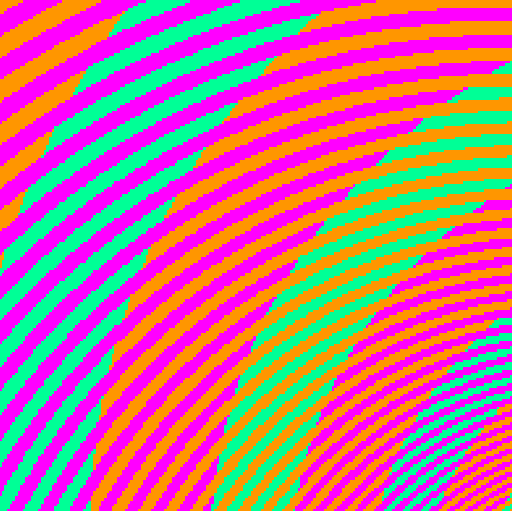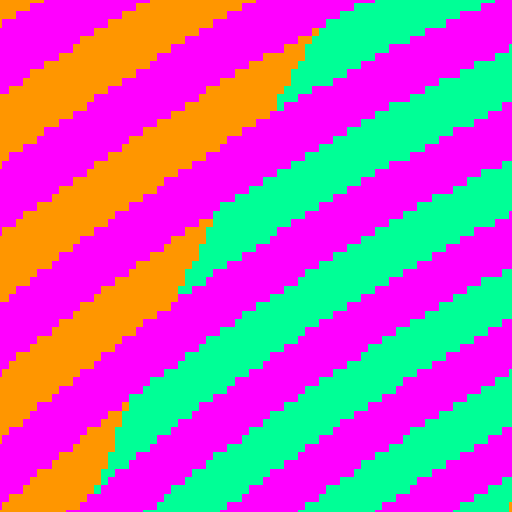This week when I was picking up comics at the shop, my daughter talked me into buying Jay Hosler‘s latest science comic, Optical Allusions, to read with her. This was a pretty easy sell, considering my previous enjoyment of Hosler’s Clan Apis and Sandwalk Adventures (both of which, it occurs to me just now, are good candidates for being pulled off the shelves for Dad-Daughter book club). You can see an excerpt from the book at Hosler’s site, or read a review of it online, or see where Amazon will sell it to you.
The book focuses on just what cool things our eyes are, and on how they got that way. Lots of what’s in it is well, well beyond what I expect Sarah to understand, but there were lots of things for us to talk about anyway.
In honour of the fun we had going through that book, I present one of the best optical illusions I’ve seen in a long time.

So, how many colours would you say are in that image? (You may ignore the single black pixel in the center–that’s not the point.)
Unless you’re colour-blind the answer is obviously 4, orange, pink, a cyan-like blue, and a green from the yellow end of the green spectrum.
Except there’s not. There’s only three.
What you are seeing as blue and green are actually the same colour. You can open the file in an image editor to confirm this
Look, I’ll zoom in a bit on the picture:

For me at least, you can start to see the trick break down at that level–it kind of looks like the inner section is blue, the next green, and then the outer one is a third colour–a combination of the blue and green.
If I zoom in again, on the edge of the section I’m seeing as blue, I get this:

Now you can see that the colour is actually a bluish green. This is the only shot of this set in which you can actually see the colour of the pixels–both the cyan-blue, and the much more yellow green that appear in the first image are actually pixels of this bluish green colour, but the contrasting colours trick your brain into perceiving the pixels as two quite different colours.
I think that’s pretty cool.
(I got the image from Buzzhunt. No idea where they got it from.)

